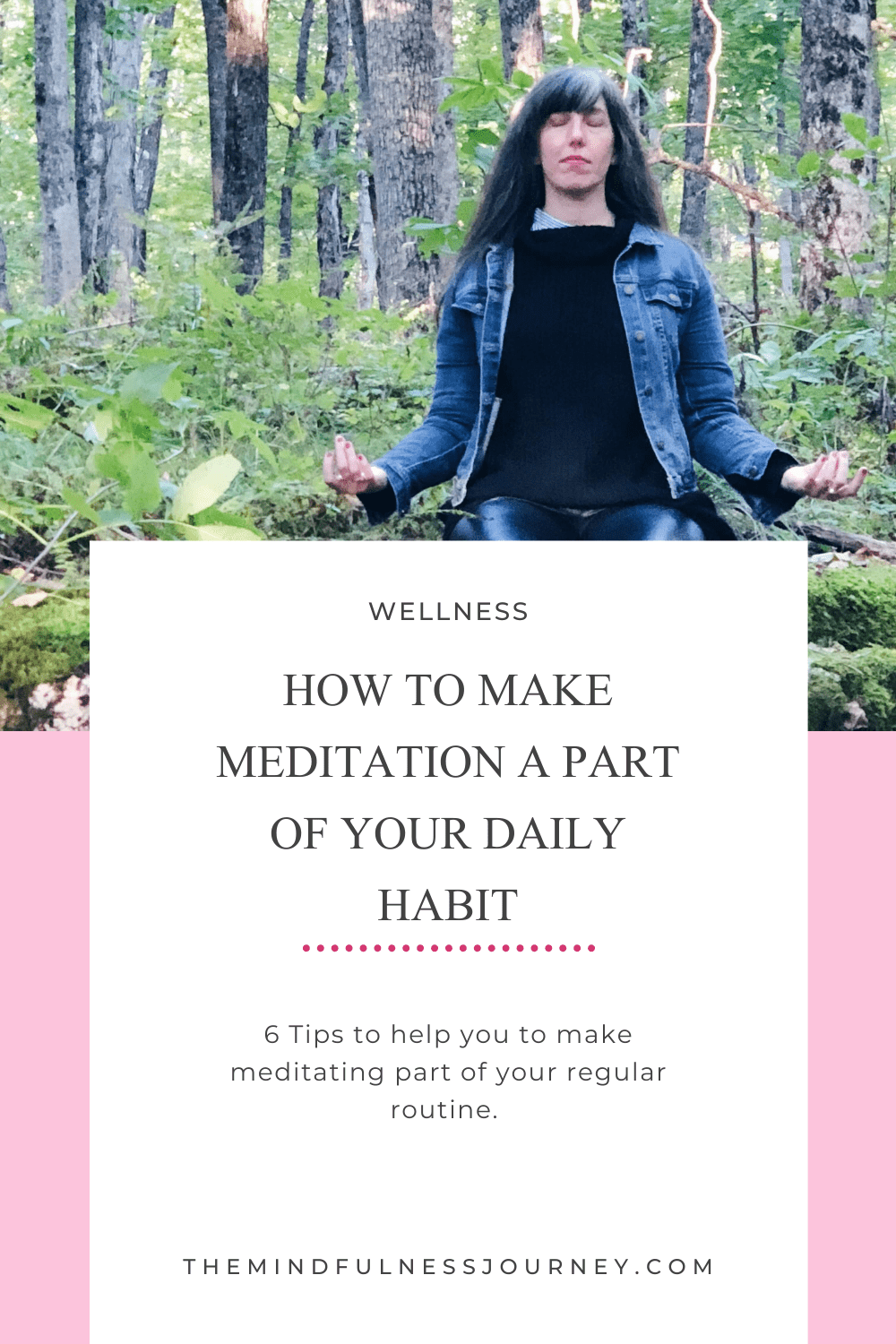
How to Make Meditation a Part of Your Daily Habit
We’ve talked about learning what mindfulness is, how to meditate, and the first steps to take in your practice. Now it’s time to talk more about making it part of your daily practice so that it becomes a habit.
How to make Meditating Part of your Daily Routine
For me, I like to meditate first thing in the morning. I start my day off with my breakfast and a little reading and then I head to my meditation space. Easing into my day helps me to feel like it’s getting off to a good start.
Ending the day with a meditation is also a good choice. Especially if you sometimes have trouble falling asleep. A lying down meditation can help you get to the dreamy, sleeplike state that makes drifting off a little easier.
In times of stress, I pull up a cushion/chair or whatever and spend some time meditating whenever and wherever it feels needed.
The time of day ultimately doesn’t matter. What matters is making it a part of your routine. This way it becomes a tool that you can turn to in times of stress or overwhelm to help you to feel more at ease.
6 Tips for Creating a Daily Meditation Habit
- Find a suitable place for your regular meditation. Somewhere with minimal disturbance . Arrange a spot that feels like a peaceful space. I have a corner of my sunroom that I like to meditate in. I have a blanket on the floor and my kneeler sits on top of it so that I am always ready to go.
- Establish a regular time to practice that suits your schedule and mood. As I shared, I like to meditate in the morning but if your morning feel a little hectic already start at another time of the day. Begin with shorter practices and as your practice grows you can sit for longer and more frequently.
- Find a posture where you can easily sit upright without being stiff or rigid. You can sit on a cushion or chair. I like to kneel down so I use a kneeler but having a cushion in-between your knees will also work. Let your body be planted firmly, your hands resting easily in your lap, your heart soft and your eyes closed or resting gently. Let go of any thoughts or plans during your meditation.
- Bring your attention to the sensations of the breath. Take a few breaths to sense into where you feel the breath the strongest in the body. Maybe as a coolness or tingling in the nostrils or throat, as movement of the chest, or the rising and falling of the belly. Let your breath be natural, relax into each breath noticing the sensations that come and go with the changing breath.
- After a few breaths your mind will probably wander. Happens to the best of us ;) Whenever you notice the mind wandering simply come back to the next breath.
- As you sit, let the breath change rhythms naturally. There is no need to alter it in any way. Allow it to be short, long, fast, slow or easy. Calm yourself by relaxing into the breath. Let your attention become gentle and as soft as the breath itself.
If you are just starting out, shorter practices are great for easing you in. That’s why I created this 7 day mindfulness challenge full of short and easy practice. Each day you will receive a new practice that can be done in 10 minutes or less. Did I mention that it’s $0?!? Click here to sign up and learn more about it.
With these 6 tips you can start to put together your own practice and start to make meditation a daily habit.





